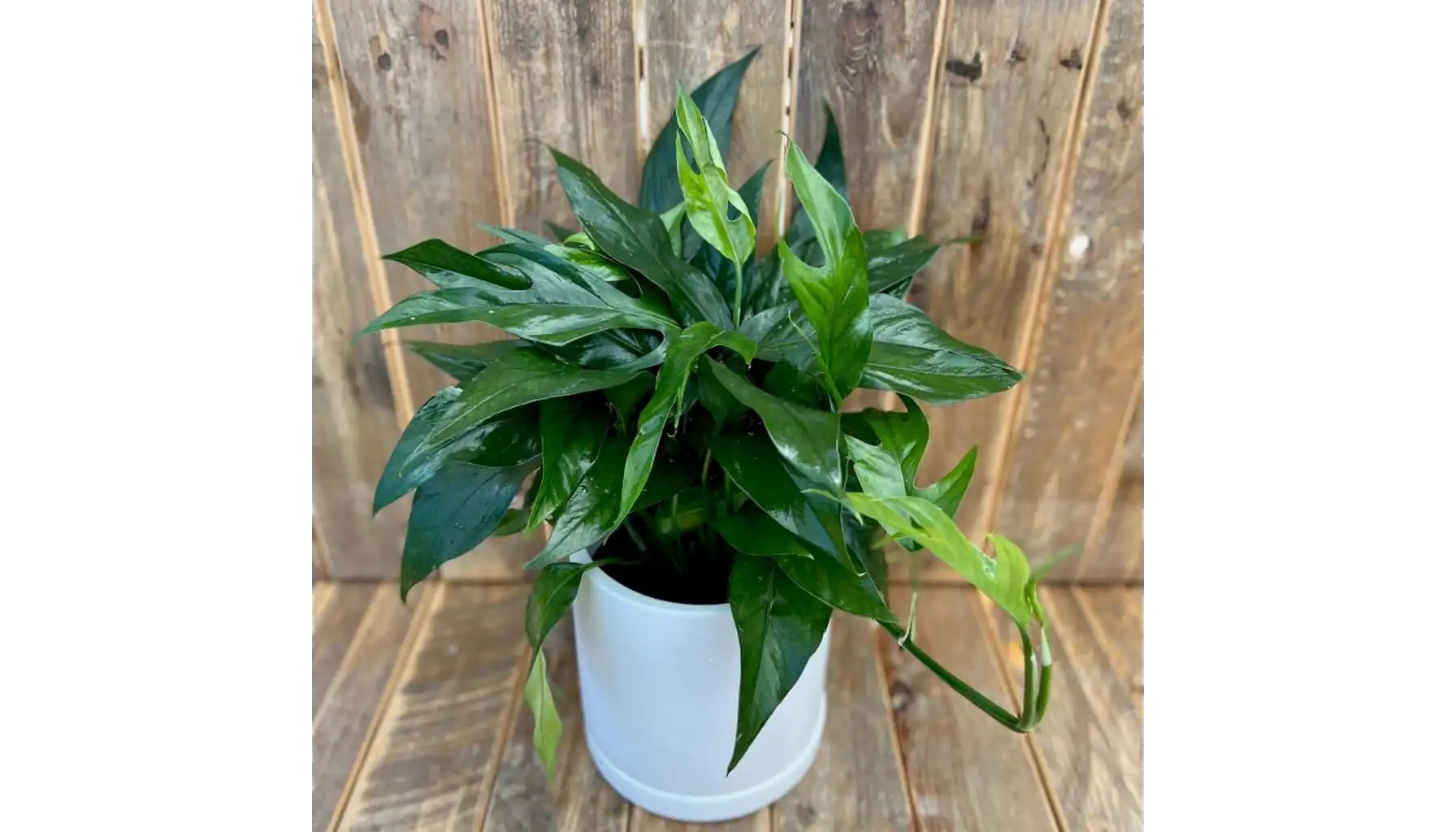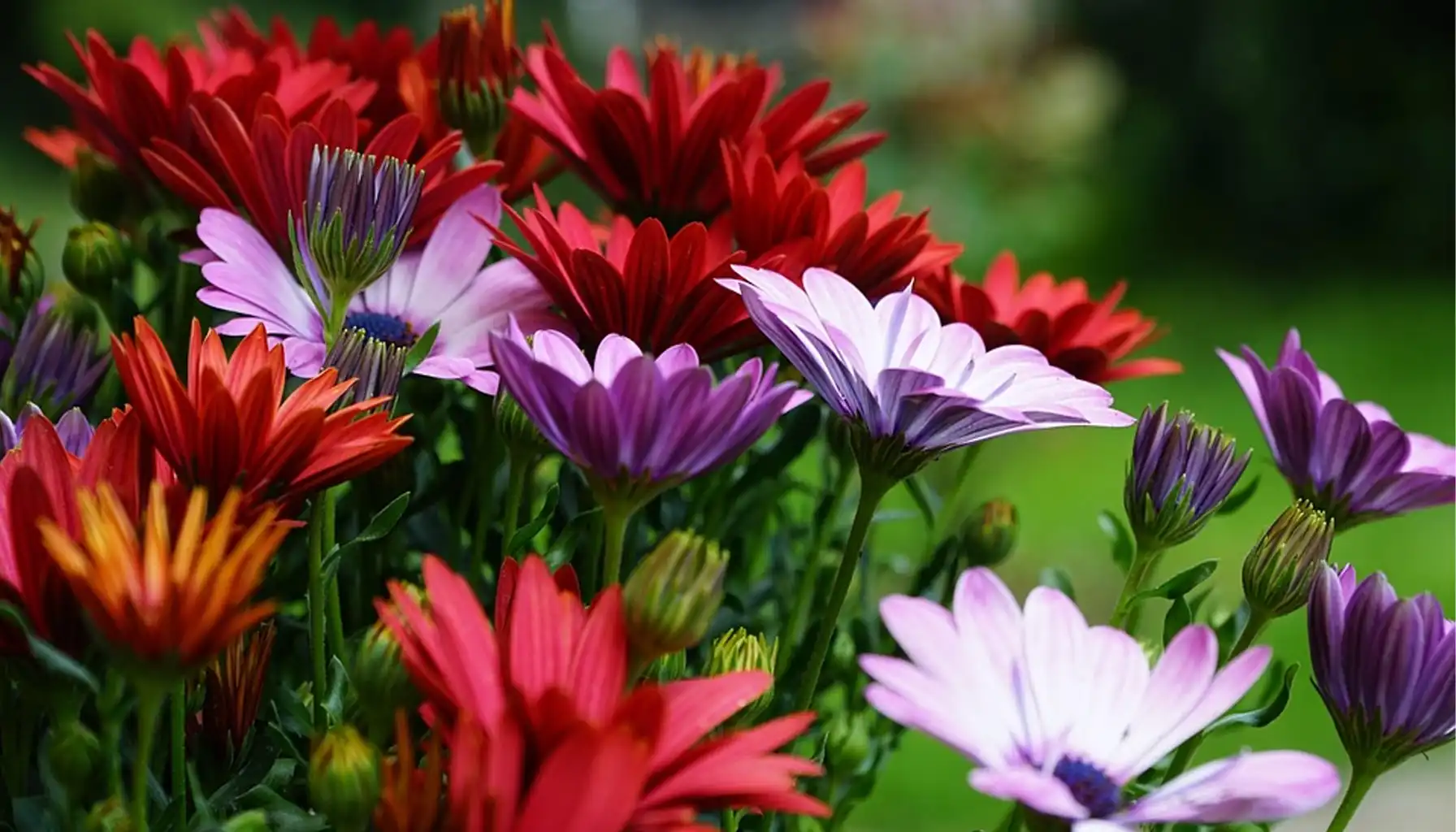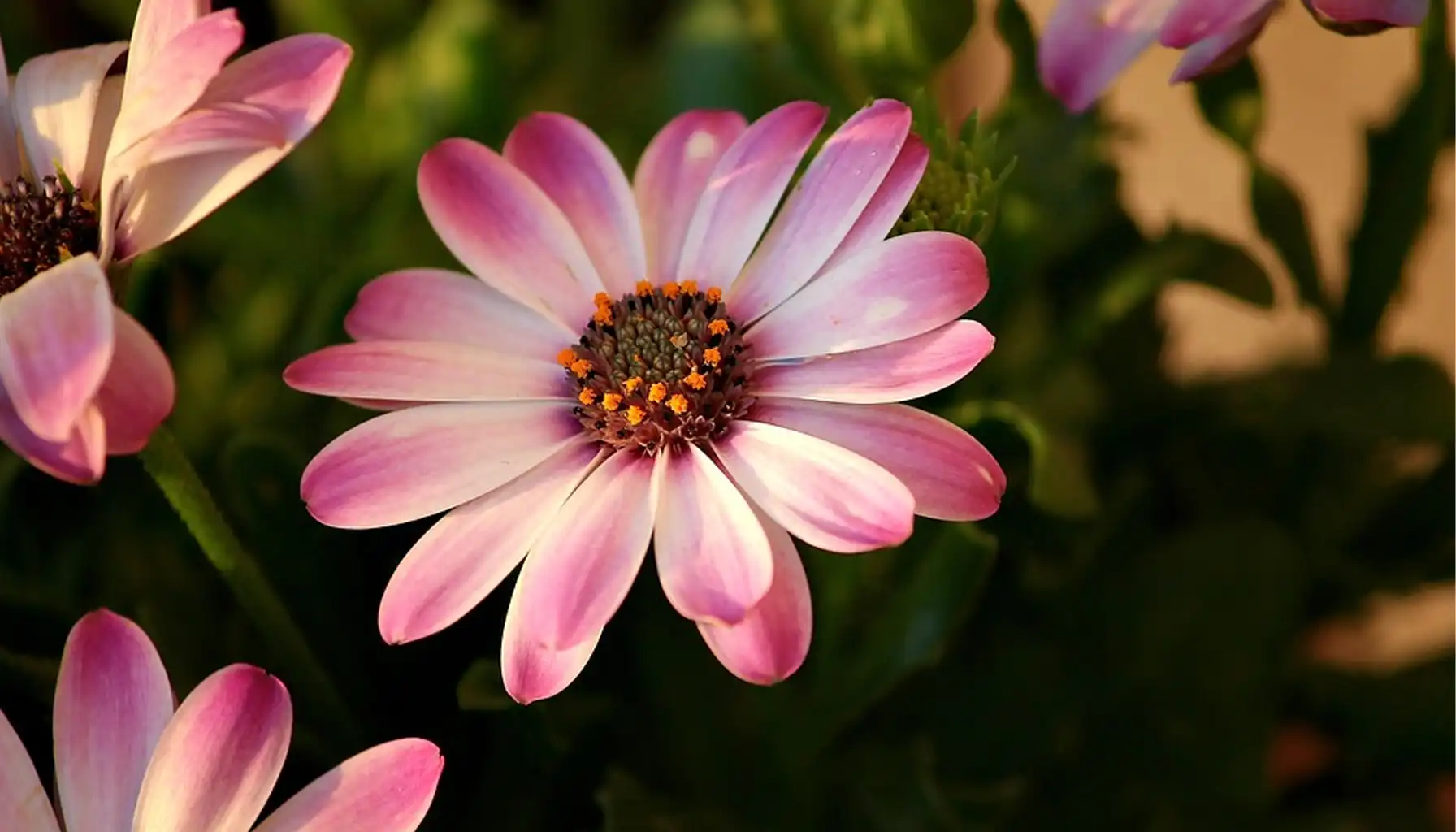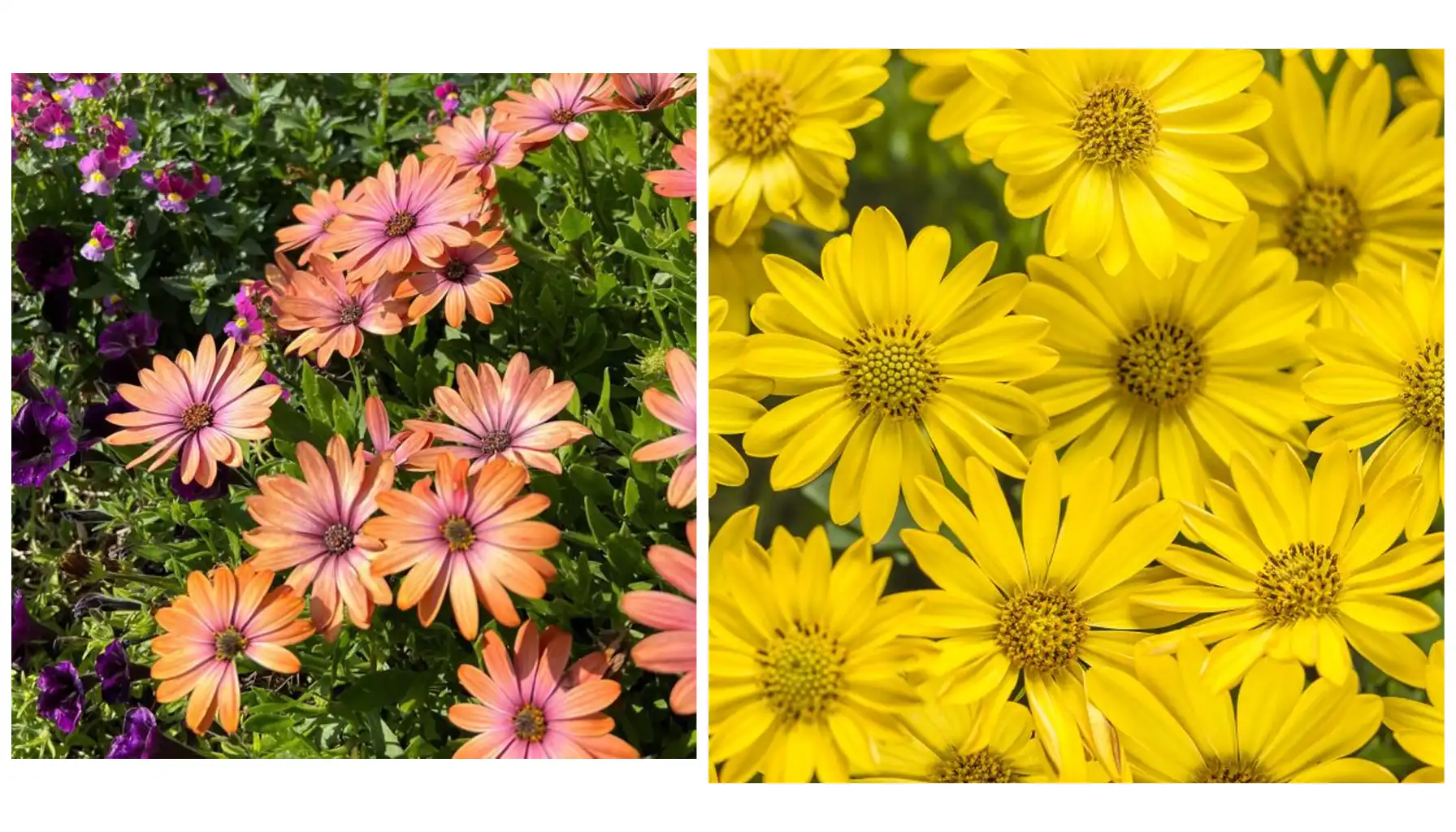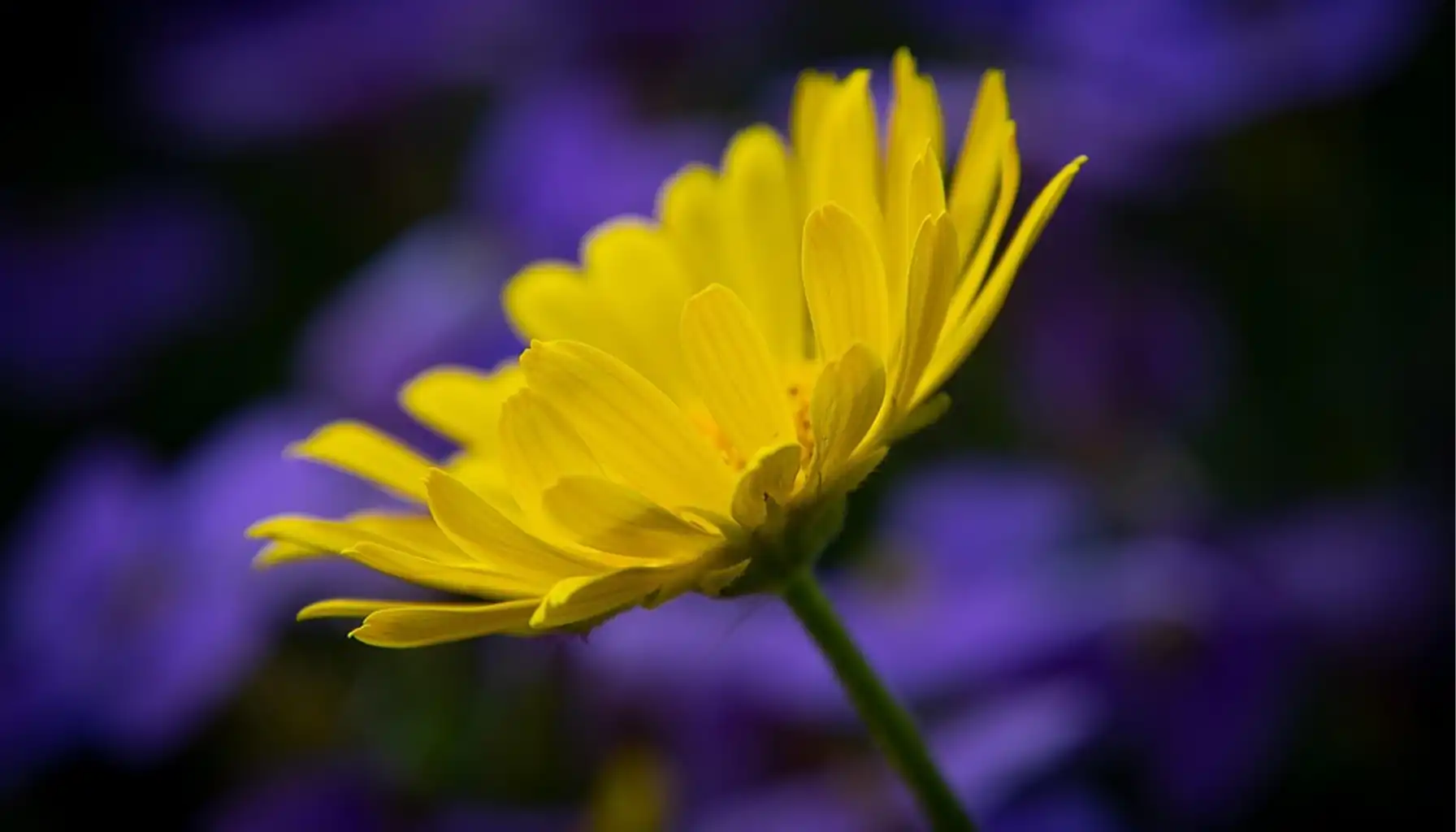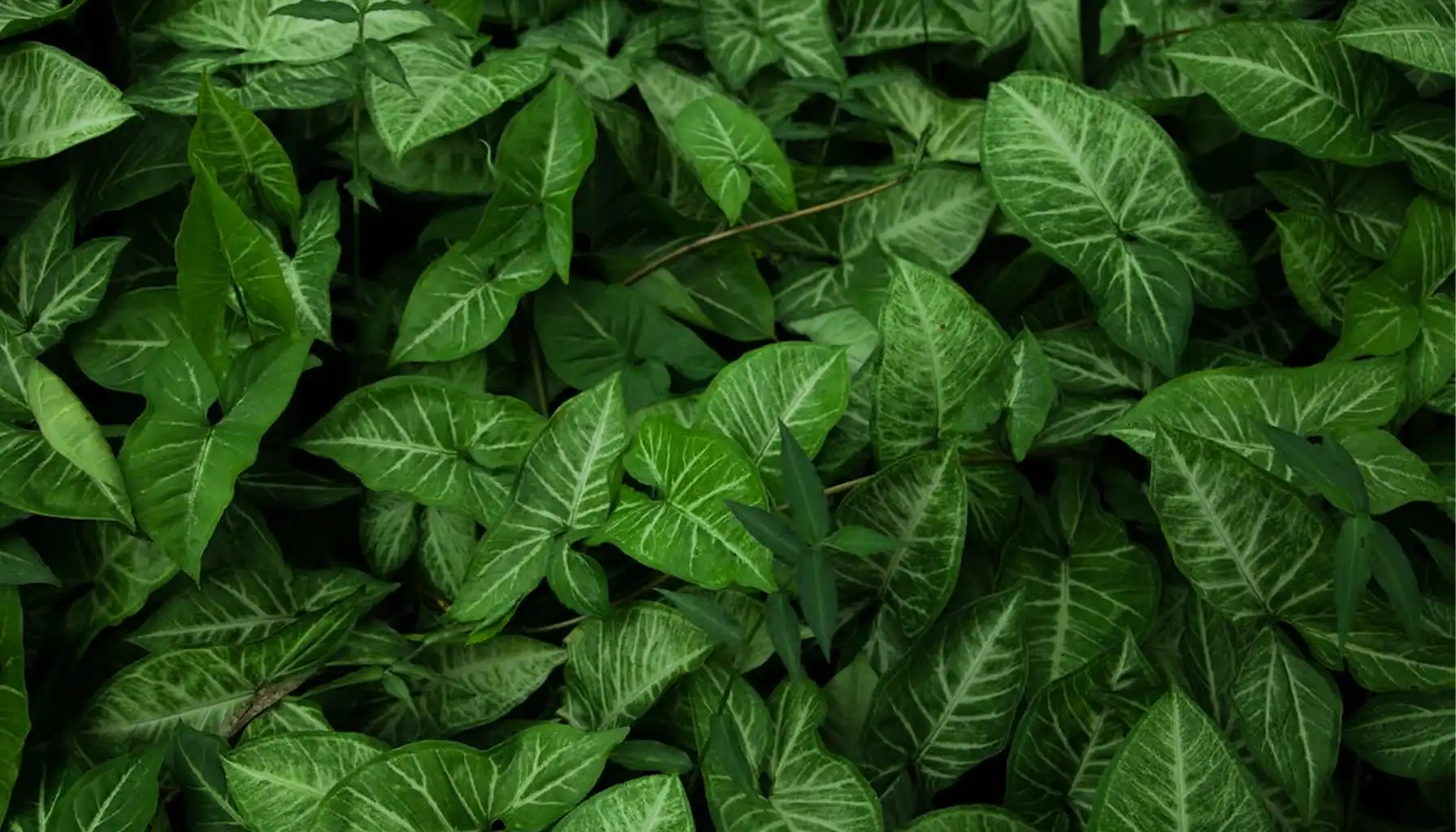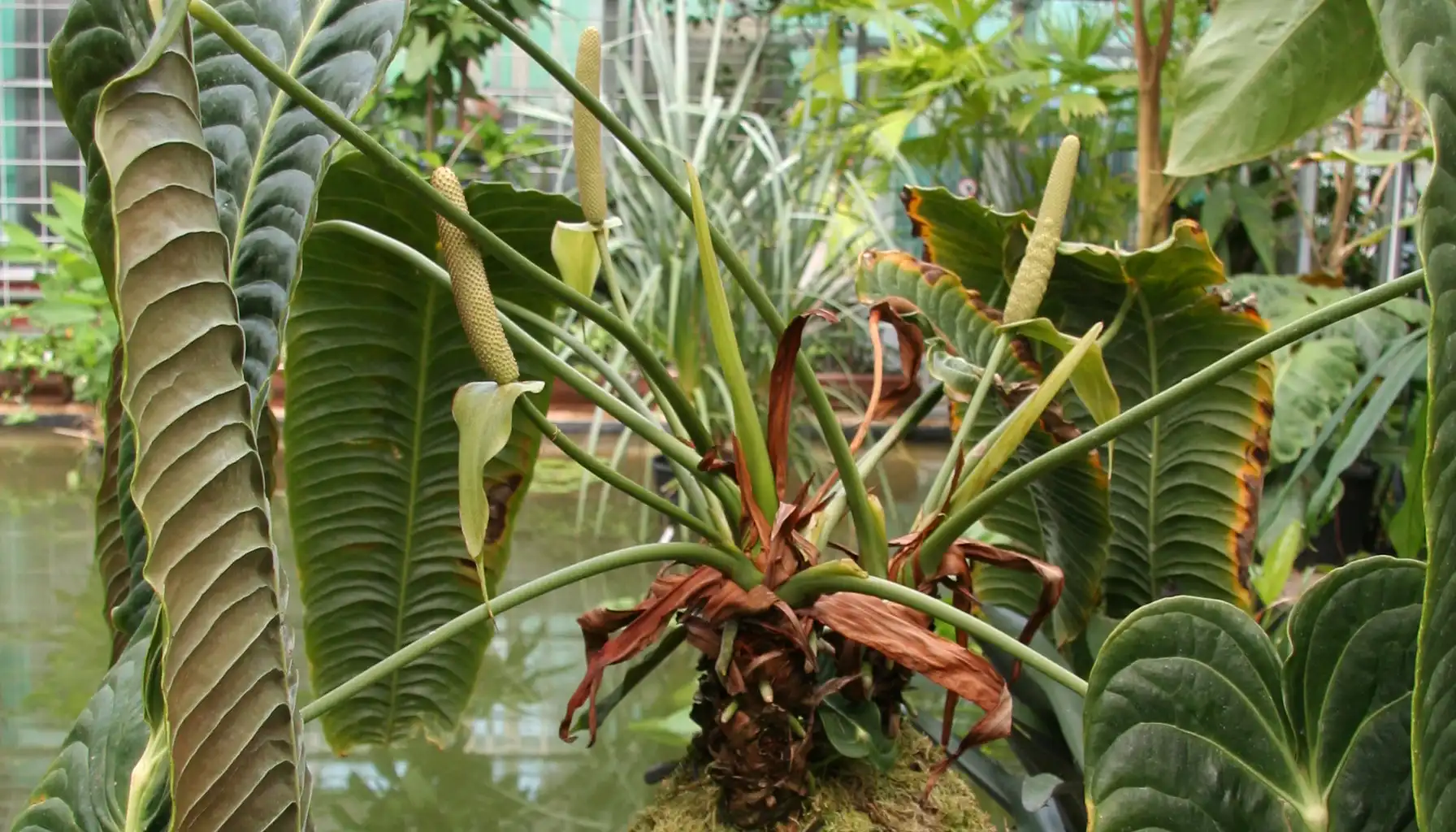If you're looking for vibrant and eye-catching flowers to brighten your garden, African daisies (Osteospermum) are a fantastic choice. Known for their dazzling african daisy flowers in a variety of colors, these plants can transform any garden with their vibrant blooms.
For help identifying different african daisy varieties, check out this flower identification app to assist you in recognizing them in your garden.
What Are African Daisies?
Osteospermum, commonly known as african daisy, belongs to the Asteraceae family, which includes sunflowers and daisies. These plants are evergreen, bushy perennials or semi-shrubs, typically growing to a height of 25 to 100 cm, which is the African daisy height range.
The flowers are composite, consisting of disc florets in the center and vibrant, petal-like ray florets that come in an array of colors such as white, purple, yellow, and pink. Due to their unusual shape and color, they are popular with gardeners.
They are known for their resilience—these plants bloom profusely and continuously even in harsh conditions such as heat, drought, or light frosts. They can continue to bloom until autumn, even when the cold weather has already set in. If you grow them in containers, you can bring them indoors to survive the winter and replant them the following spring.
African Daisy Cultivation Guide
Characteristic | Details |
Family | Asteraceae (Sunflower family) |
Lifespan | Perennial |
Soil | Fertile, well-drained |
Temperature | Warm-loving |
Light | Sun-loving |
Watering | Moderate, regular |
Propagation | By seeds |
Sowing | Indoors – March-April |
Transplanting | Mid-May to early June |
African Daisy Propagation: How to Grow From Seeds
African daisy seeds offer a straightforward method for starting these plants. Follow these steps for successful propagation:
Start Indoors: Begin by sowing Osteospermum seeds indoors 6-8 weeks before the last expected frost. Use a well-draining seed-starting mix, such as peat and sand, in trays or pots. Keep the temperature steady at 20–22°C to encourage germination, which usually occurs within 7-10 days.Using grow lights if natural light is insufficient can improve their growth rate.
Outdoors Transplanting: After the frost risk has passed and outdoor temperatures remain consistently above 10°C at night, transfer the seedlings into the garden. This will prevent frost damage and allow the plants to acclimate to outdoor conditions.If you're in a region with high winds or light frosts, consider using cloches or garden covers to protect them during the early stages.
Maintenance: Ensure the soil remains moist but well-drained, which is crucial for healthy growth. Overwatering should be avoided, as it can lead to root rot. Consistent care in terms of watering and light will support the strong growth of these plants.
Caring for Osteospermum Plants
African daisy care is relatively simple. Following a few basic rules will ensure your plant produces abundant flowers throughout the growing season.
Sun and Soil Requirements
Sun or Shade: African daisy sun or shade preferences lean heavily towards full sun. While they can tolerate some shade, their flowering may be less vigorous in such conditions.
Soil: These plants prefer fertile, well-drained soil. Amend heavy clay or sandy soils with organic material, such as compost, to enhance both fertility and drainage.
Watering and Fertilizing
Watering: Water regularly but let the soil dry out between waterings. During prolonged droughts, watering becomes essential to prevent the flowers from shrinking and the plant from stopping new blooms.
Fertilizing: Use a balanced, slow-release fertilizer every 2 weeks. Over-fertilizing can lead to lush foliage but fewer flowers, so always adhere to recommended amounts.
Pruning and Deadheading
Deadheading: Regularly removing dead or faded flowers promotes continuous blooming throughout the season. This also stops the plant from setting seed and encourages more vibrant growth.
Pruning: Light pruning in early spring or late summer can help maintain the plant’s shape and encourage bushier growth. Remove any damaged or dead stems to keep the plant looking tidy.
Dealing with African Daisy Problems
Although African daisy plants are relatively hardy, certain issues can arise if not properly maintained. Root rot is a common problem, and attacks from pests such as aphids or garden insects are also a concern. Using organic pest control methods such as neem oil or insecticidal soap can help combat these problems.
Frost is another problem for these flowers, especially in regions where winter temperatures drop below freezing. You can mitigate this by either covering plants in the event of frost or by growing them in pots and bringing them indoors when the cold sets in.
African Daisy Colors: A Rainbow in Your Garden
African daisy flowers come in a stunning variety of colors, including african daisy purple, yellow african daisy, and blue-eyed african daisy. The bold and contrasting hues make them stand out in any garden setting. The blue-eyed beauty african daisy is a particularly popular hybrid, showcasing a striking blue center surrounded by delicate petals in shades of white, pink, or purple.
The diverse african daisy colors also include white african daisy and more exotic varieties, such as the trailing african daisy, which cascades beautifully over containers.
The bright shades of this plant will decorate any space, for this you can choose a classic yellow african daisy or a rare blue african daisy. It will provide a burst of color that can last from spring to fall, depending on the growing conditions.
Companion Plants for African Daisies
African daisy companion plants should complement their growing needs. For a harmonious garden, consider pairing your african daisy osteospermum with:
Lavender: This fragrant plant, like osteospermum, grows in full sun. It needs well-drained soil and moderate watering. Lavender is also very drought-resistant, which goes well with African daisies, as they also do not suffer from a lack of water. Both of these plants are unpretentious.
Lobelia: This ampelous plant looks great in hanging baskets and containers. Lobelia's ability to tolerate various soil types and its need for regular watering are well suited to growing conditions, helping to create a harmonious garden ensemble. Lobelia attracts pollinating insects, including dragonflies, which in turn improves the health of the entire garden. Lobelia erinus is the most common type of lobelia in gardening. It is often called border, blackberry and simply blue.
Marigolds: They are a must-have for any garden. They naturally repel pests like aphids and nematodes, acting as a protective shield. Plant them alongside African daisies to cut down on pest damage. Marigolds have a rich history in traditional medicine, with their petals used for their anti-inflammatory properties to promote natural healing.
Echinacea (Coneflower): Echinacea is a frost-resistant perennial plant that thrives in conditions similar to African daisies.The tall echinacea adds vertical interest, complementing the bushy, compact form of Osteospermum. Echinacea has an extended flowering period that can prolong the blooming season. It is commonly used to boost immunity, with teas and supplements made to help treat colds and infections.Delicious Candy is a compact bush 45-60 cm high with numerous fuchsia-pink flowers and orange-red tubular flowers in the center.
Salvia: Salvia, a popular choice for borders and containers, adds height and structure to the garden. The vertical, spiky flowers of Salvia complement the lush backdrop of leaves provided by African daisies. Noteworthy varieties include Red Alert, which reaches only 35 cm in height and is adorned with dense clusters of fiery red flowers up to 20 cm long and dark emerald leaves, and Red Magic, slightly taller at 45 cm, featuring dense clusters of red flowers, also up to 20 cm long.
African Daisy Deer Resistant Features
One of the benefits of african daisy plants is that they are generally african daisy deer resistant. The strong scent and tough foliage make them less attractive to deer and other browsing animals, which is ideal for gardens in areas where deer are prevalent.
African Daisy Annual or Perennial?
When choosing to grow Osteospermum, it’s important to consider whether it will be an african daisy perennial or an annual in your region. In warmer climates (zones 10-11), these plants are African daisy perennial, meaning they’ll come back year after year.
However, in colder climates, Osteospermum is typically grown as an annual. To extend the lifespan of your flowers, consider bringing container-grown plants indoors during the winter months and placing them in a sunny spot.
You can also start with african daisy seedlings to ensure a healthy, strong plant that will flourish when it's time to transplant outdoors.
Conclusion
So, equipped with all these tips and recommendations, you can now proceed to laying out a beautiful garden that will awe you with its flowering variety. These plants are beautiful and versatile; they will complement and fill any garden with the energy of bright colors. With tender loving care, ideal placements, and the right plants, your garden will stand while beaming through the years.
Related AI Plant Finder Posts
